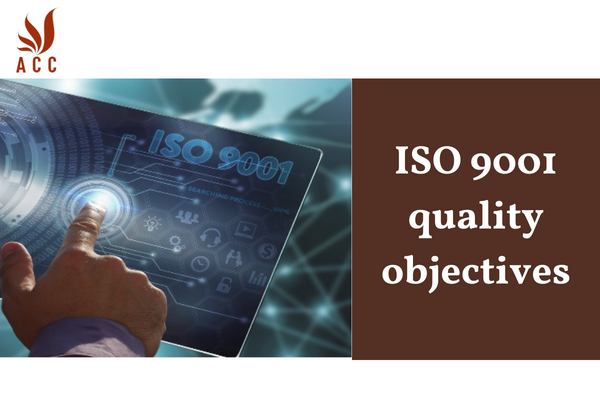ISO 9001 quality objectives are specific, measurable, achievable, relevant, and time-bound goals that organizations set to improve their quality management systems (QMS). They are an essential part of any ISO 9001 implementation, as they provide organizations with a clear direction and focus for their improvement efforts.

ISO 9001 quality objectives
1. What are quality objectives?
Quality objectives are measurable targets that an organization sets for itself to improve its quality management system (QMS). They are based on the organization's quality policy and are used to guide its activities and decision-making.
2. Why are quality objectives important?
Quality objectives are important for a number of reasons. First, they help to ensure that the organization is focused on improving its quality. Second, they provide a framework for measuring progress and identifying areas for improvement. Third, they can help to improve the organization's efficiency and effectiveness.
3. How to set quality objectives
When setting quality objectives, organizations should consider the following factors:
- The organization's quality policy
- The organization's strategic goals
- The organization's current performance
- The organization's resources and capabilities
Quality objectives should be:
- Measurable: They should be specific, quantifiable, and time-bound.
- Achievable: They should be realistic and achievable within the organization's resources and capabilities.
- Relevant: They should be aligned with the organization's quality policy and strategic goals.
- Timely: They should be set within a specific time frame.
4. Examples of quality objectives
Here are some examples of quality objectives:
- Reduce the number of customer complaints by 50% within one year.
- Increase customer satisfaction ratings to 95% within two years.
- Reduce the number of product defects by 25% within three months.
- Increase employee satisfaction ratings to 85% within six months.
5. How to monitor and review quality objectives
Once quality objectives have been set, they should be monitored and reviewed on a regular basis to ensure that they are being met. This will help to ensure that the organization is on track to achieve its quality goals.
Organizations can use a variety of methods to monitor and review quality objectives, such as:
- Collecting data and metrics
- Conducting surveys and interviews
- Conducting audits
By setting and monitoring quality objectives, organizations can improve their quality management system and achieve their quality goals.
6. Frequently asked questions
Q1: What are quality objectives in the context of ISO 9001?
Nội dung bài viết:






Bình luận